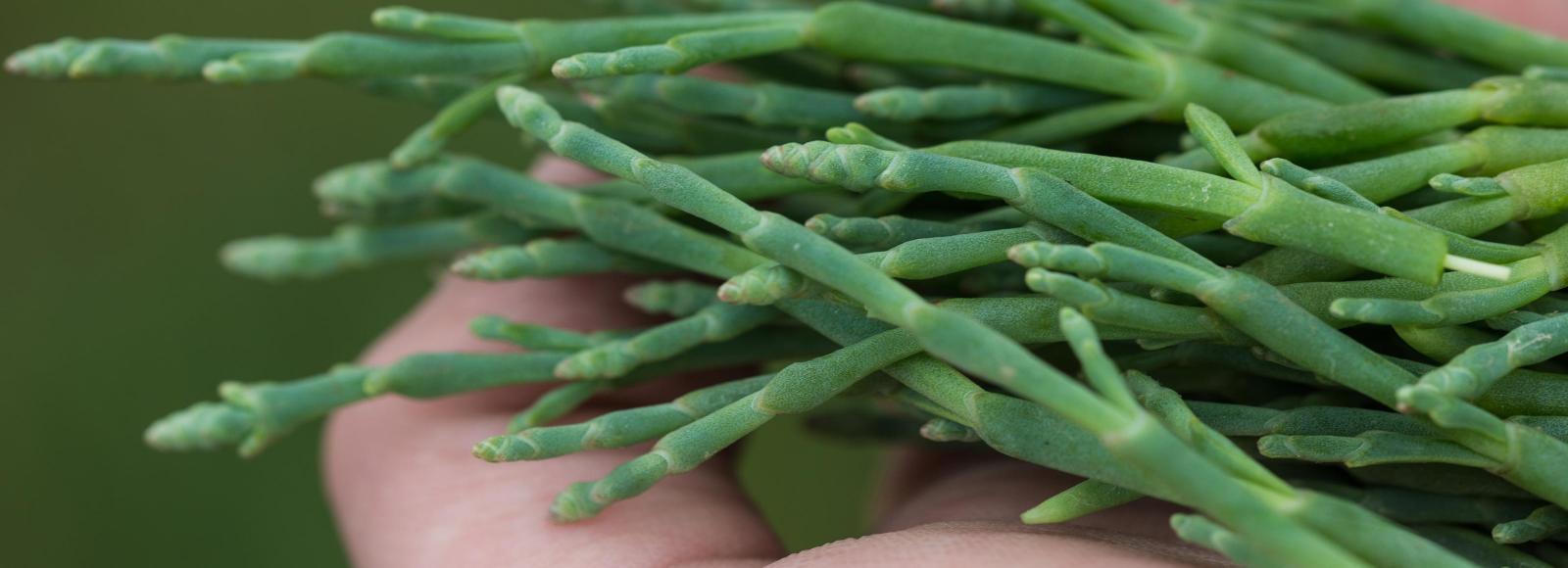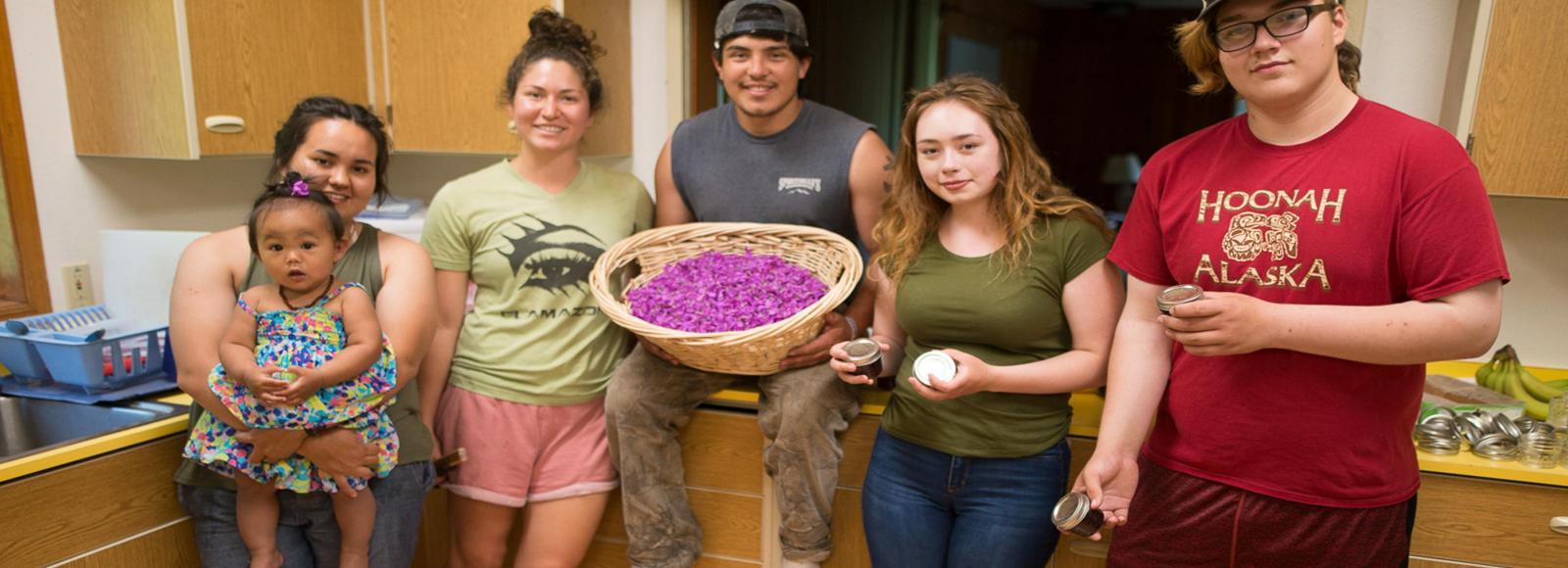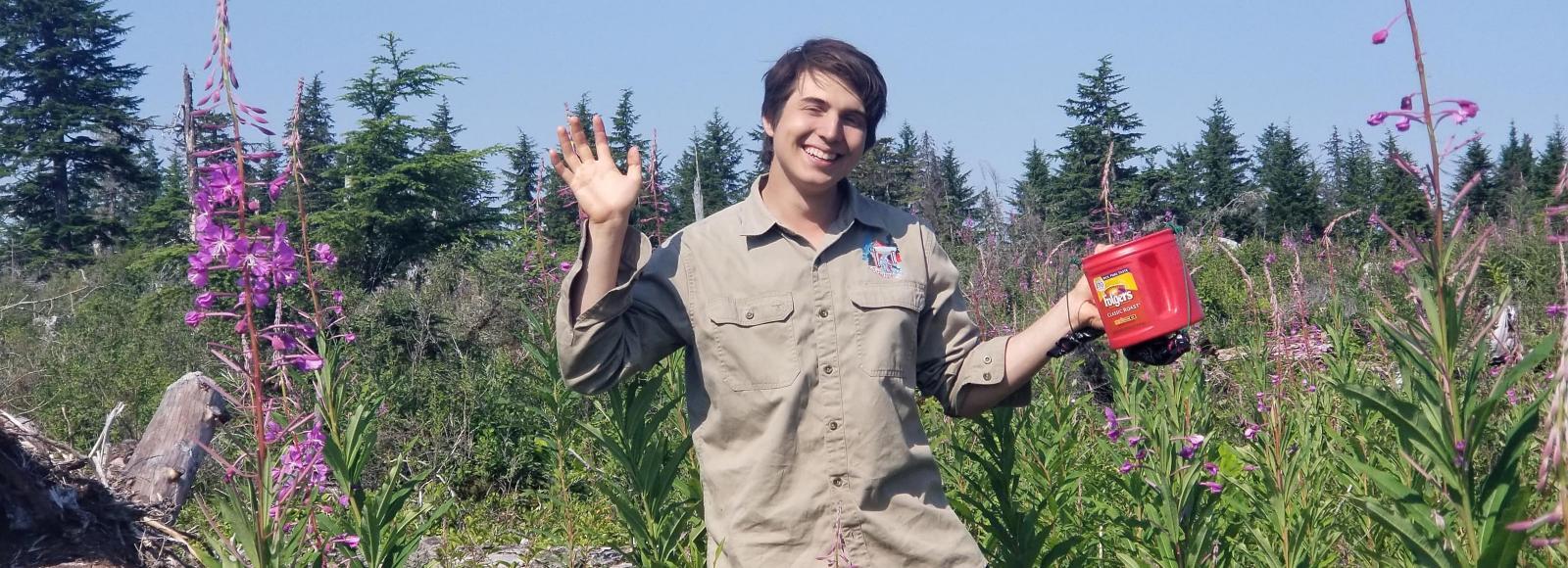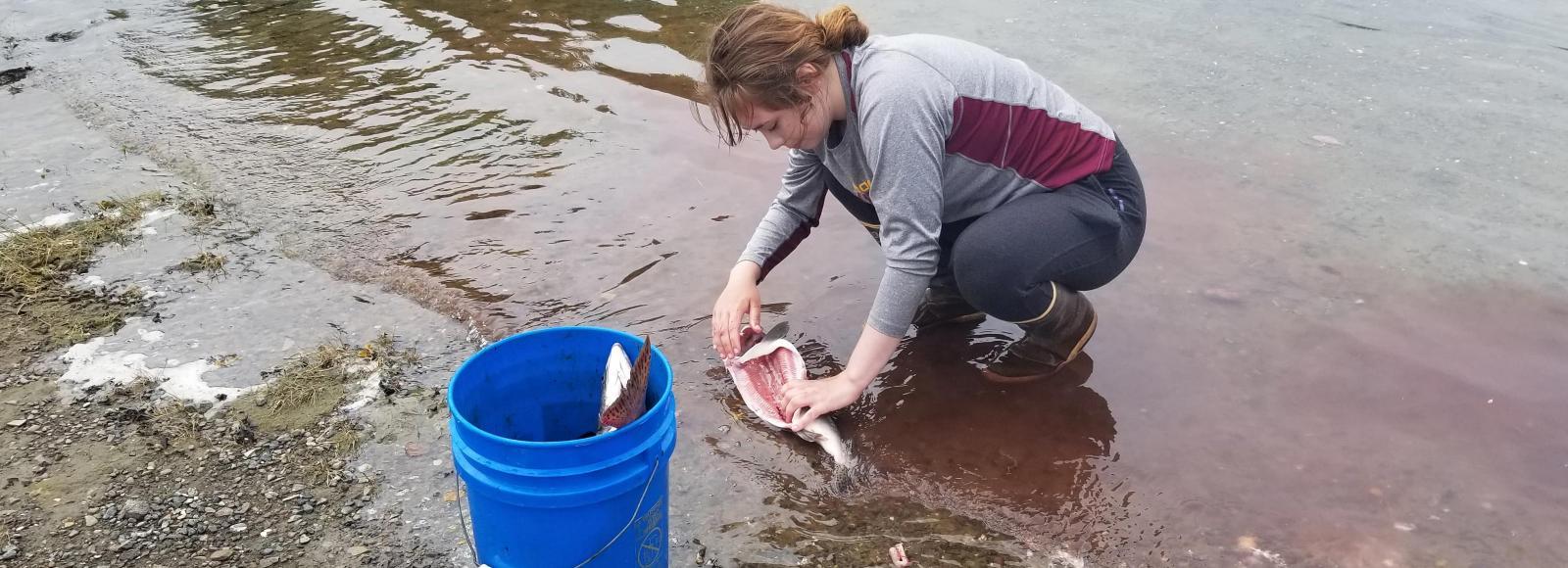
Community Resource Strategist
Harvesting sukkádzi (beach asparagus), courtesy of Ian Johnson, HIA
Miakah Nix has spent her summer based in SE Alaska working as Ecotrust’s Indigenous fellow with the Hoonah Native Forest Partnership (HNFP). Part of her work has been collaborating with other local community organizations for the Huna Traditional Food Fair. Miakah shares photos of their preparations, gathering sukkádzi (beach asparagus), lóol (fireweed flowers), catching and preparing salmon, all the while strengthening community relationships and celebrating the Xunáa Tlingit way of life.
The Huna Traditional Food Fair began as a public awareness campaign intended to better engage the community in Hoonah Native Forest Partnership (HNFP) processes, but as the idea grew, an extensive network of partners blossomed. This event brings together community members from every corner of Hoonah who are working to educate, support, and inspire healthy, traditional lifestyles. The partners collaborating on the Huna Traditional Food Fair are Ecotrust, HNFP, Hoonah Indian Association (HIA), Huna Heritage Foundation (HHF), the Alaska Native Sisterhood (ANS), Training Rural Alaskan Youth Leaders and Students (TRAYLS), and Sealaska Corporation. Each partner offers critical support for the success of our work and this celebration.
On our first successful gathering trip (pictured above), the six-person HNFP crew, Huna Heritage Director Amelia Wilson, VISTA AmeriCorps Sean Williams, and Hoonah community members joined forces to harvest sukkádzi (beach asparagus) in preparation for the Huna Traditional Food Fair.
The Huna Traditional Food Fair is entirely free and open to the public, all are encouraged to attend. Deer stew and fruit crisp meals will be provided, as well as opportunities to enter a food competition and for children there will be games and activities. There will also be dance performances from our Xunáa Káawu dance groups.
We are excited to show off the delicious foods, impressive harvesters, and amazing cooks in our community. Together, we jarred more than 12 gallons of beach asparagus for distribution at the food fair. That makes 72 lucky people who will go home with a pint of fresh or pickled sukkádzi.

Fresh sukkádzi (beach asparagus)
The most iconic sign of summer in Alaska are the Lóol (fireweed flowers). The TRAYLS crew picked almost 20 gallons of these tasty blooms for fireweed jelly. Together we preserved 120 jars of the tasty treat for distribution to the community.

A TRAYLS crew harvested and learned to how to put up lóol jelly. While picking lóol, we discussed the importance of leaving the underdeveloped blossoms intact so that the plant can continue to bloom.

Tlingit Gathering Rule #1: Use every part and never waste! TRAYLS Ashlyn Gray cleans Pink salmon for putting up in fresh-pack jars. The salmon eggs will be mixed with octopus’s ink to make traditional paint for Don Starbard’s cedar hat designs. The heads, fins, and innards will be used for crab and halibut bait.

Thank you to HNFP volunteers from HIA, TRAYLS, AmeriCorp VISTA Sean Williams, and Huna Totem intern Eva Bingham for reeling them in.
Thank you to all our partners for making this event possible. And, a special thanks to treasured community member and HIA Community Tourism Director, Don Starbard, for making our fishing trips possible. For updates and more photos documenting Miakah’s adventures, follow her on Instagram @miakahnix.